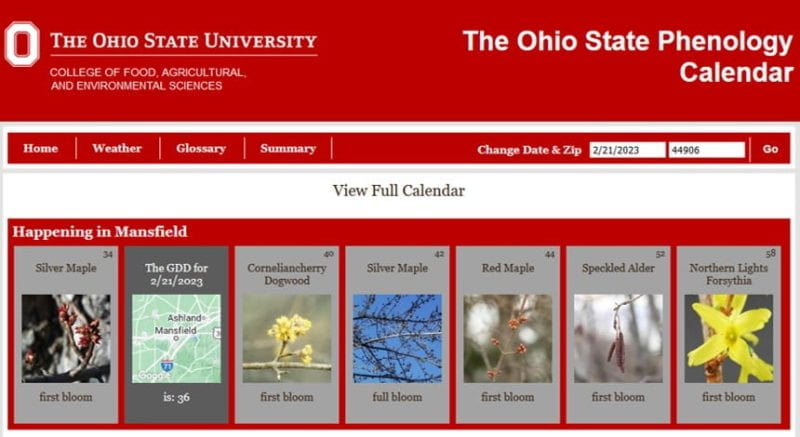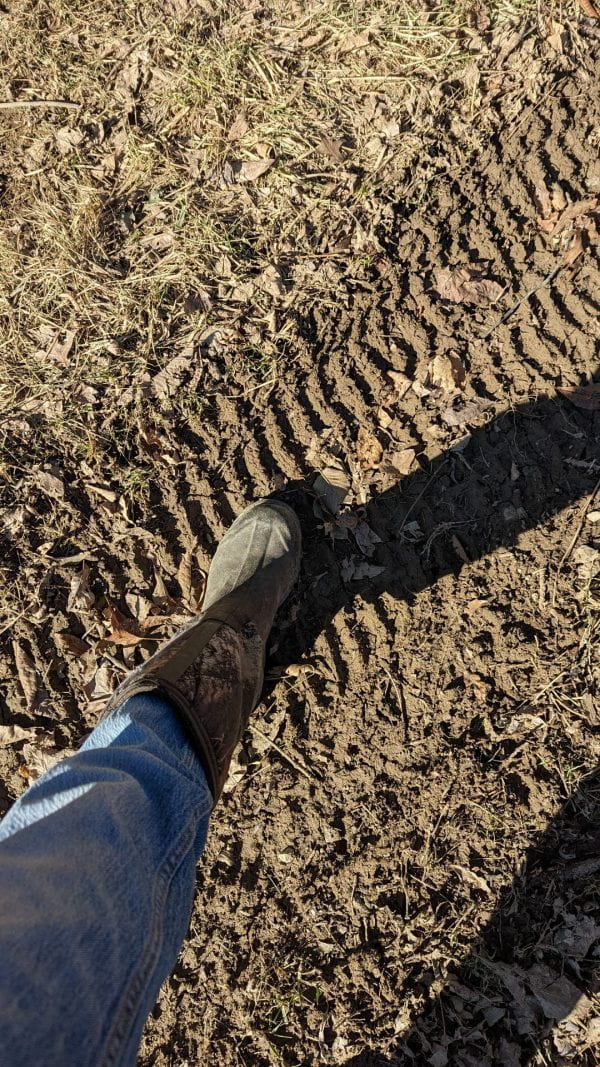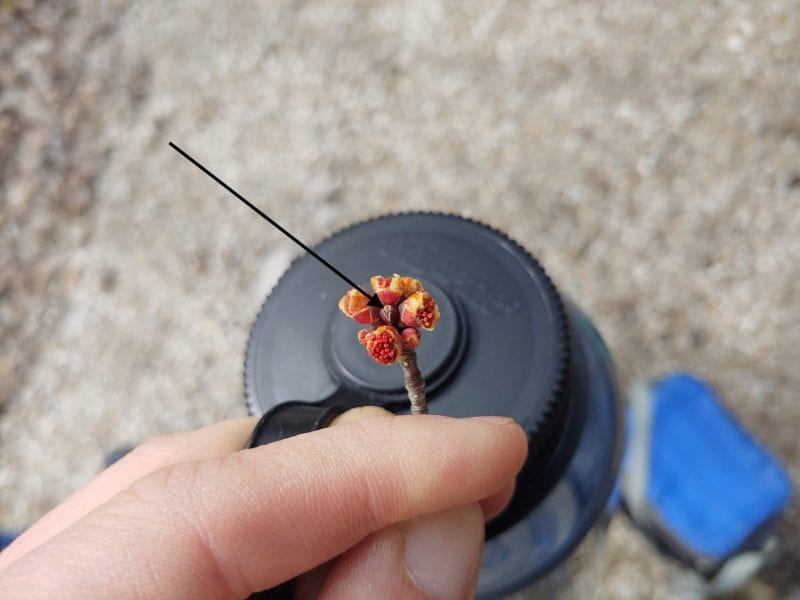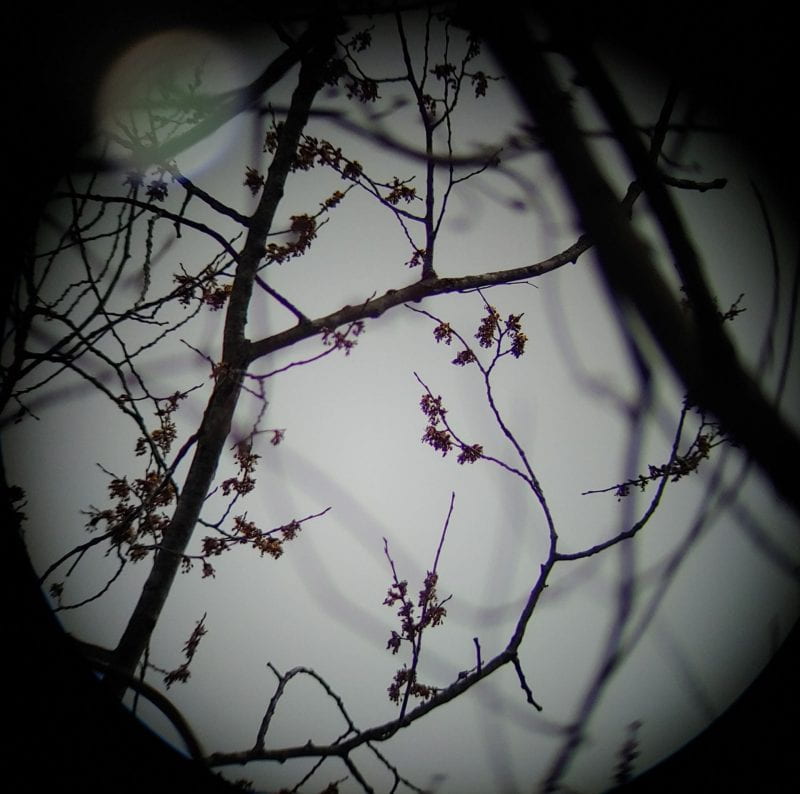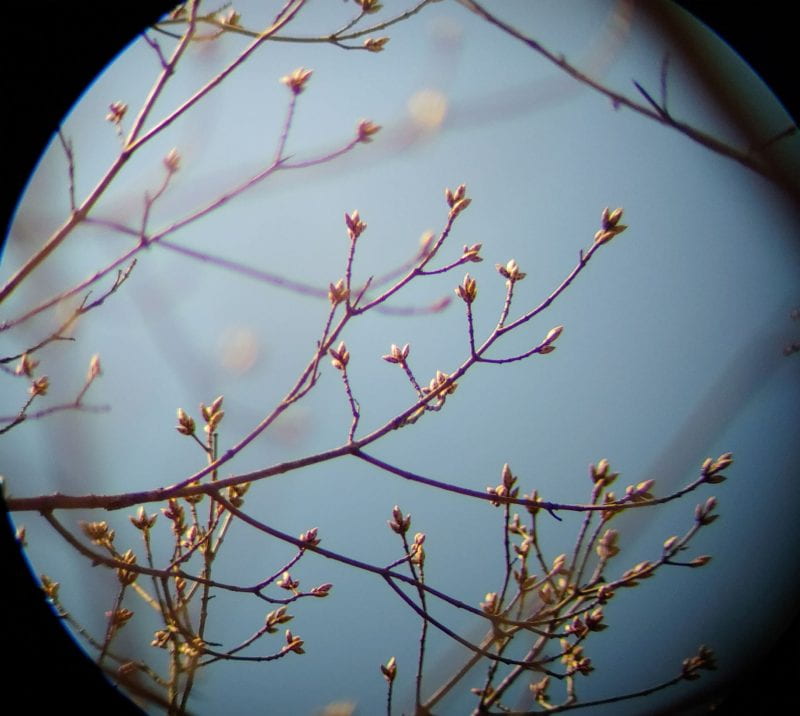Here is May’s edition of our feature Monthly Maple Review. Once a month, we review a research article to spotlight key findings, investigate curiosities, and uncover important implications for Ohio’s maple producers. Please comment below if you have thoughts, ideas, insights, or questions. If you stumble on to a new maple article and want to see it highlighted in a Monthly Maple Review, please reach out to me via email – karns.36@osu.edu.
Phenology, put simply, is the study of nature’s timing. A couple years back, we did a special article series on the use of growing degree days (GDDs) to monitor and predict the progression of trees and shrubs in Ohio. Typically, sugarmakers are most keyed in and interested in whether maple trees are early, right on time, or late to produce the sap runs we convert into maple syrup. But phenology gets at much more than just the time of year we make syrup. Leaf out, dormancy, seed development, emergence of different insect pests, fall color change, and leaf drop are all elements of the annual cycle of plant phenology. Phenology is a topic we keep coming back to you, but it’s interesting, it’s important, and it’s complicated – so we are back again!
This month’s article, published in March of this very year, is titled “A Century of Climate Warming Results in Growing Season Extension: Delayed Autumn Leaf Phenology in North Central North America.” Authors Kellen Calinger and Peter Curtis (both Ohio State University researchers in the Department of Evolution, Ecology, and Organismal Biology) published their study in an open-access journal called PLoS ONE. Open-access meaning, if you want to read the full paper, you can access the article here.
The methodological approach for this research paper is particularly interesting and clever. A farmer named Thomas Mikesell from Fulton County, OH, collected data from the years of 1883-1912, meticulously recording phenological and meteorological information that was preserved in a massive 700+ page publication that is still accessible today. Kellen and Peter, the modern day researchers from Ohio State, used Mikesell’s observations as a baseline to compare data from 2010-2014, a full century later.

Among the tree species selected in their study (they chose 7 in all), no Acer maple species were chosen unfortunately. However, the beauty in this study’s approach is the real focus on this month’s review. It is both elegant and simple to think that someone’s observations over 100 years ago could serve as such a significant monument in time to understand how conditions shift and change through the decades, even centuries. Sometimes science gets complicated, complex, to the point of absurdity it seems. This is a pleasant reminder that there is profundity in the simple as well. Write down your observations, allow time to pass, make more observations, and compare. Simple. Done.
I believe there is a lesson here for us all – take notes, jot down curiosities, record all the important dates from every sugaring season. And most importantly – save those scribbles and notes in a place where not only you, but the next generation too, can find them and propel your own personal learning journey. Just in case you don’t recognize the common name “white maple” – that’s silver maple.

If you’re from northwest Ohio, or even just from the upper quarter latitude of Ohio, I strongly suggest you peek at this table to see how your observations jive (or don’t jive!) with Mikesell’s observations back in the late 1800s. What conclusions do you draw? Are there big differences for each observational category – first fully formed leaf, in full leaf, in blossom, fruit ripe, and complete change of foliage? Or are some categories different, but some phenomenon right on schedule and unchanged? It is important to remember that phenology is driven by a host of factors (as we noted in our March Monthly Maple REVIEW) – shifting climate is one factor, but precipitation plays a role, active and recent weather events/trends, photoperiod (fancy name for day length), and more. Observations that have not changed much on the calendar are likely responding to more static and unchanging factors such as photoperiod. Observations that do differ, those are more likely triggered changing climate and other more dynamic factors.
If you’re not from that part of Ohio, dig up those old records that your dad’s dad kept back when he ran the sugarshack in years bygone. Rifle through the old drawers of dusty old spiral-bound notebooks. Flip over the back of black-and-white photographs to see if there is an inscription that reads “first boil, 1952.” All those memories are also records, and we learn about the present when we look to the past. So I guess this review is less of a review and more of an admonishment – bear witness to the power of data collection and long-term record keeping. Participate in keeping notes. If nothing else, those notes will be curiosities to be pondered years down the road. At best, meticulous notes and records can help you make sense of the dynamic, cluttered, and information-dense world that we live!






